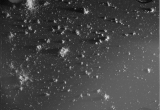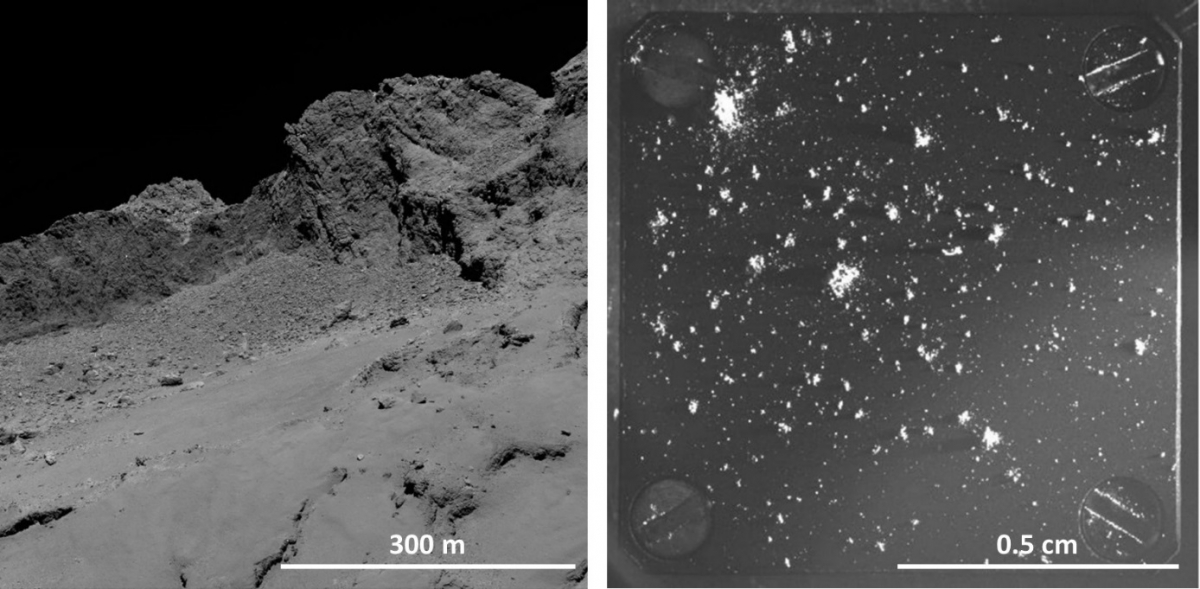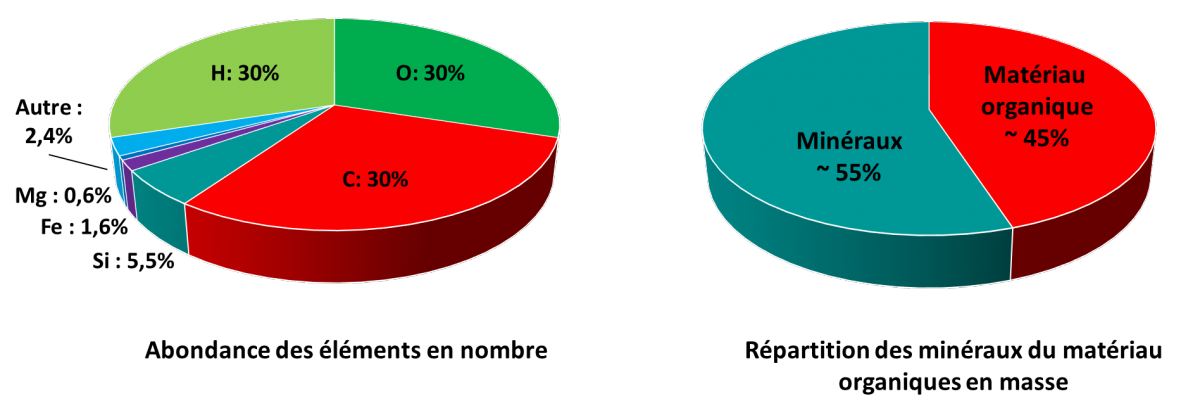The COSIMA instrument on board Rosetta unveils the composition of comet 67P/Churyumov-Gerasimenko
An international scientific team including two co-Investigators from the IAS has determined the elemental composition of the dust of 67P/Churyumov-Gerasimenko, the comet explored by the European space probe Rosetta. Their results reveal some of the most carbon-rich materials and the least altered ever explored. This cometary carbon is essentially in a macromolecular organic structure, meaning that it is mainly in that form that it was delivered by comets to the primitive Earth.
The European space probe Rosetta followed and observed the comet 67P/Churyumov-Gerasimenko for 2 years. More than one year after the end of the mission, it has already disclosed much information and many details about the comet: its precise size and mass, the nature and proportions of the gases present in its coma (water vapour, carbon dioxide and monoxide, and a large array of organic molecules, i.e. mainly composed of carbon, hydrogen, oxygen and nitrogen). The comet nucleus has been scrutinized in detail. Its surface is very dark, very poor in ices, varied, and presents a complex morphology (fractures, cliffs, pits etc...). However, its detailed chemical composition and in particular the quantification of its carbon content, which is assumed to be at least partly the reason for its dark color, until now remained an object of debate and hypothesis.
COSIMA is an instrument on board the Rosetta probe. It is under German leadership (MPS Göttingen) and has an important instrumental and scientific French contribution. The instrument collected the sub-millimetric cometary dust particles ejected by 67P’s nucleus, detected them and took photos of them (COSISCOPE microscope, IAS co-PI responsibility), and analyzed them using a Time-Of-Flight Secondary Ion Mass Spectrometer (TOF-SIMS). One year after revealing that the comet's dust contained carbonaceous material with a macromolecular structure, the scientific team of the COSIMA instrument was able to determine the average elemental composition of this dust and demonstrate that this macromolecular carbon material represents nearly half of the mass of these cometary particles. The other half consists mainly of anhydrous silicate minerals. The COSIMA measurements covering the two years of the Rosetta mission show that all the dust particles analyzed have a similar composition, regardless of their date of collection, size or morphology, which suggests that these properties are general for the whole nucleus.
Fig. 1. On the left, the surface of the cometary nucleus seen by the Rosetta probe. Condensed ice beneath the surface sublimates from the depths of the comet when it is warmed up when the comet approaches the Sun. The gas emissions drive with them small particles of matter that can be collected and analyzed by the instruments of the Rosetta probe. On the right, an image taken by COSISCOPE, the microscope of COSIMA that was conceived and built at the IAS. The photo shows a collecting target (1 cm × 1 cm) with tiny fragments of the nucleus that impacted on it during exposure and are up to a millimeter in size. Credits: left ESA/Rosetta/MPS for OSIRIS Team MPS / UPD / LAM / IAA / SSO / INTA / UPM / DASP / IDA, right: ESA / Rosetta / MPS for COSIMA Team MPS / CSNSM / UNIBW / TUORLA / IWF / IAS / ESA / BUW / MPE / LPC2E / LCM / IMF / UTU / LISA / UOFC / vH&S.
Comets like 67P (or previously Halley's Comet), are therefore among the most carbon-rich objects in the Solar System. The results obtained from the COSIMA measurements give a ratio of carbon to silicon (C / Si) abundance very close to the Solar ratio and indicate the absence of a significant hydration of the mineral phases. This information means that the comet is quite primitive in nature. It has preserved almost intact the matter that has accreted and formed the nucleus. Comets are thus a certain form of preserved memory of the ancient history of the Solar System.
Fig. 2. Left: the average elemental composition of the dust particles of comet 67P. Right: the average mass distribution of minerals and organic material in these dusts. Credit: ESA / Rosetta / MPS for COSIMA MPS / CSNSM Team / UNIBW / TUORLA / IWF / IAS / ESA / BUW / MPE / LPC2E / LCM / IMF / UTU / LISA / UOFC / vH&S.
Moreover, beyond the high molecular diversity observed for the organic matter detected in the gas phase, these gases and sublimated ices only represent a small fraction of the total cometary matter. Most of the cometary matter consists of the intimate mixture of minerals and solid carbonaceous matter measured in the dust. Thus, the results of COSIMA show that most of the organic matter of comet 67P is in the form of macromolecular carbonaceous material. Consequently, if comets have played a role in the appearance of life on our planet by bringing in particular carbon-rich material, it is essentially in this complex macromolecular form that it has been. This last result is in line with laboratory analyses of extraterrestrial samples collected on Earth (meteorites, micrometeorites and Interplanetary Dust Particles), even though the atmospheric entry may have partially altered the carbonaceous content of these latter samples.
Reference :
Bardyn A., Baklouti D., Cottin H., Fray N., Briois C., Paquette J., Stenzel O., Engrand C., Fischer H., Hornung K., Isnard R., Langevin Y., Lehto H., Le Roy L., Ligier N., Merouane S., Modica P., Orthous-Daunay F.-R., Rynö J., Schulz R., Silén J., Thirkell L., Varmuza K., Zaprudin B., Kissel J. and Hilchenbach M. (2017). Carbon-rich dust in comet 67P/Churyumov-Gerasimenko measured by COSIMA/Rosetta. Month. Not. Roy. Astr. Soc. 469, S712. DOI:10.1093/mnras/stx2640
CNRS press release: http://www2.cnrs.fr/presse/communique/5341.htm
Contact atIAS : Donia Baklouti






